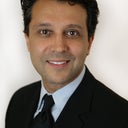Posted underRevision Rhinoplasty q&a
2 Months Post-Op Rhinoplasty - Nose is Now Crooked and Longer Than Before
with hanging columella.My surgeon said its swelling and scar tissue because it's a revision,but x rays and new doctor showed hump on left bridge is bone.I realised he had done a poor job.I asked what procedure,if bones were broken,if he sutured tip,no answers. He said he only removed cartilage, but i feel something poking on the right side of tip, and on middle tip of left side. If i have cartilage removed (if he did add)will that distort my nose?
Answers (7)
From board-certified doctors and trusted medical professionals
Dr. Umang Mehta, MD

Dr. Umang Mehta, MD
Board Certified Facial Plastic Surgeon
Answer
Dr. Sam Naficy, MD, FACS

Dr. Sam Naficy, MD, FACS
Board Certified Facial Plastic Surgeon
Answer
Dr. Thomas A. Lamperti, MD

Dr. Thomas A. Lamperti, MD
Board Certified Facial Plastic Surgeon
Answer
Dr. Tania Medina de Garcia, MD
Dr. Tania Medina de Garcia, MD
Plastic Surgeon
Answer
Dr. Peter E. Johnson, MD
Dr. Peter E. Johnson, MD
Board Certified Plastic Surgeon
Answer
Dr. Michel Siegel, MD
Dr. Michel Siegel, MD
Board Certified Facial Plastic Surgeon
Answer
Dr. Richard W. Fleming, MD (retired)
Dr. Richard W. Fleming, MD (retired)
Board Certified Facial Plastic Surgeon
Answer
More Revision Rhinoplasty Questions
See all Revision Rhinoplasty Q&AWE SEND PRETTY
EMAILS
What’s trending? Who’s turning heads? Which TikTok myths need busting? We’ve got you. No fluff, no gatekeeping—just real talk. Get our free, unfiltered newsletter.